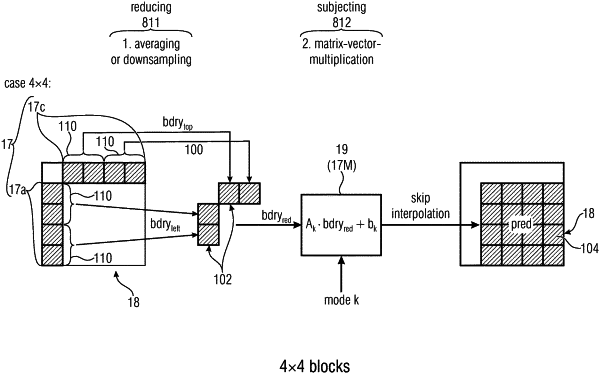| CPC H04N 19/61 (2014.11) [H04N 19/176 (2014.11); H04N 19/184 (2014.11); H04N 19/44 (2014.11)] | 18 Claims |

|
1. A decoder for decoding a picture from a data stream, configured to predict a predetermined block of the picture using a plurality of neighbouring samples, the decoder comprising:
a non-transitory computer-readable medium; and
at least one processor communicatively coupled to the non-transitory computer-readable medium, wherein the at least one processor is configured to read instructions from the non-transitory computer-readable medium to perform operations comprising:
subdividing the picture into a plurality of blocks of different block sizes, the plurality of blocks comprising the predetermined block;
reducing the plurality of neighbouring samples to obtain a reduced set of sample values lower, in number of samples, than compared to the plurality of neighbouring samples;
obtaining predicted values by applying a matrix containing weighting factors to the reduced set of sample values;
selecting a linear or affine linear transformation depending on a width W and height H of the predetermined block such that the linear or affine linear transformation selected for the predetermined block is selected out of a first set of linear or affine linear transformations as long as the width W and height H of the predetermined block are within a first set of width/height pairs and a second set of linear or affine linear transformations as long as the width W and height H of the predetermined block are within a second set of width/height pairs which is disjoint to the first set of width/height pairs; and
deriving, by interpolation, prediction values for further samples of the predetermined block based on the predicted values for the plurality of neighbouring samples.
|